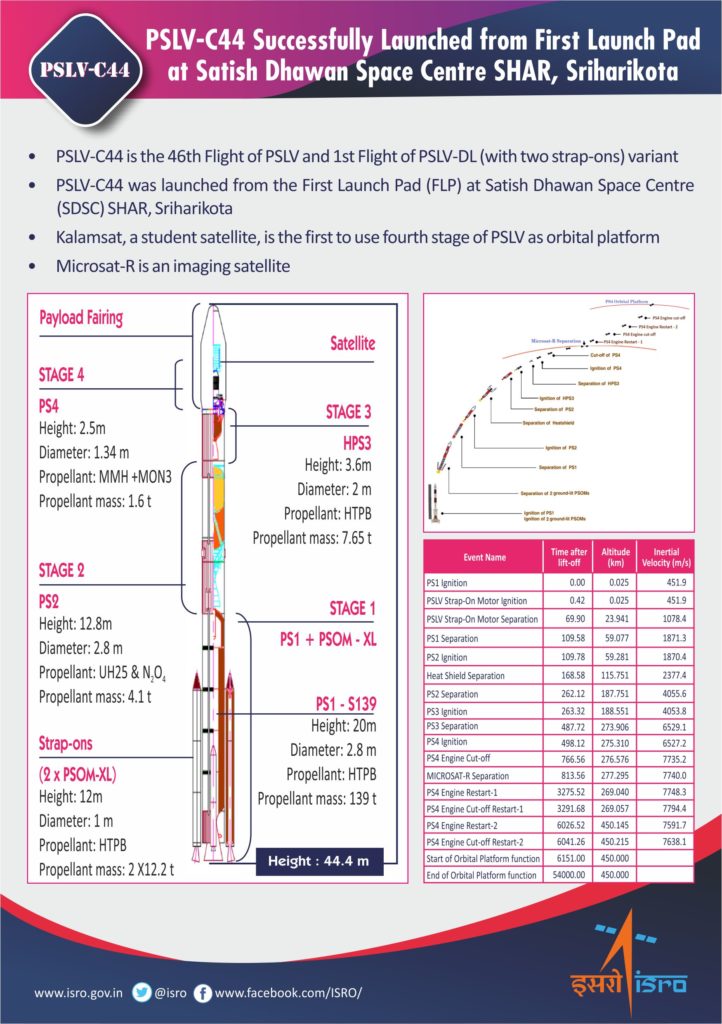- ISRO on January 24, 2019 successfully injected Microsat-R and Kalamsat-V2 satellites into their designated orbits lifted by PSLV-C44.
- The PSLV-C44 lifted off at 23:37 Hrs(IST) on January 24, 2019 from the First Launch Pad at Satish Dhawan Space Centre SHAR,Sriharikota in its 46th flight.
- After injection, two solar arrays of the satellite were deployed automatically and ISRO Telemetry Tracking & Command Network (ISTRAC) at Bengaluru assumed control of the satellite.
- Subsequently,the fourth stage (PS4) of the vehicle was moved to a higher circular orbit of 453 km after two restarts of the stage, to establish an orbital platform for carrying out experiments. Kalamsat-V2, a student payload, first to use PS4 as an orbital platform, was taken to its designated orbit about 1 hour and 40 minutes after lift-off.
- This flight marked the first mission of PSLV-DL, a new variant of PSLV with two strap-on motors.
- In the previous PSLV launch on November 29, PSLV-C43 had successfully launched India’s HysIS as well as 30 customer satellites from abroad.
- The PSLV-C44 mission was unique as it was for the first time ISRO used the last stage of the rocket as a platform to perform experiments in space.
- According to the ISRO chairman K. Sivan, this new low cost technology will help students to conduct several inspiring experiments in space by attaching their instruments to the last stage of the rocket.
- Microsat-R is an imaging satellite whereas Kalamsat-V2 is a student payload.
- ‘Kalamsat’ is named after former President A P J Abdul Kalam. It is the world’s lightest and smallest satellite built by a student start-up from Chennai. Microsat-R will be used to take high-resolution photos of the Earth for defence research.



